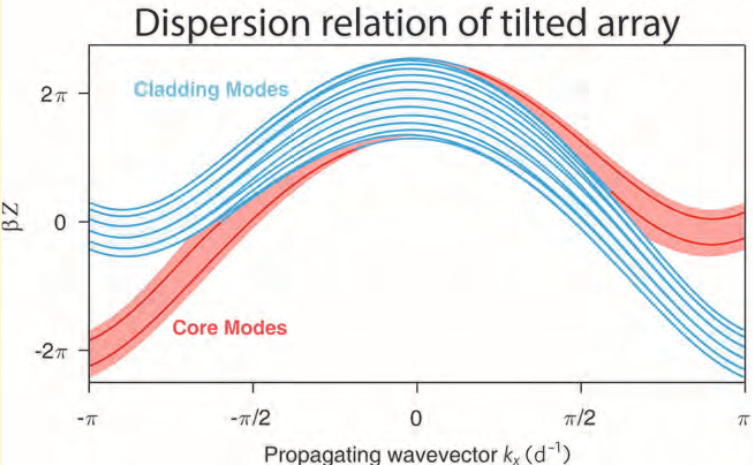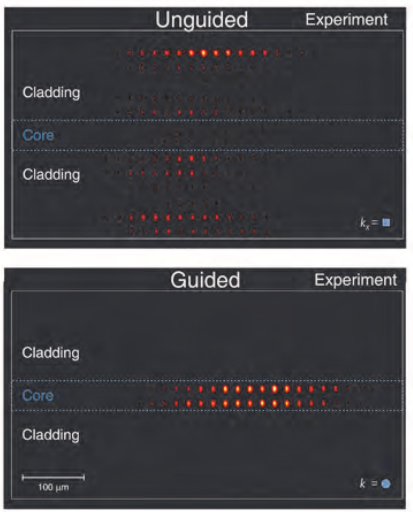Gauge fields are a fundamental concept in physics, describing the basic interactions between charged particles. For example, electrons interact with each other through its gauge field, the photon. Neutral particles (such as photons) by being chargeless are thus decoupled from real gauge fields. However, by properly engineering a physical system through its geometric design or through some specific external modulation, an artificial gauge field can be induced, such that the effective dynamics of the system behaves as if it were governed by a real gauge field, even if the particles are neutral. Several year ago, the idea of using of artificial gauge fields to induce a fundamentally new kind of waveguiding mechanism was proposed [1], but this concept has thus far evaded experimental observation.

This year, we present the first experimental observation of waveguiding by artificial gauge fields [2]. To implement this idea, we fabricate an array of identical laser-written waveguides that are evanescently coupled with each other. We induce an artificial gauge field in such an array by solely controlling the trajectory of the waveguides by tilting or oscillating the waveguides as shown in Fig. 1. In this way, the waveguides in the core and cladding region follow different trajectories (or have different oscillating phases) and therefore are subject to different gauge fields besides being identical, i.e. all the waveguides in the array have the same geometry and the same index of refraction.

We demonstrate two mechanisms for waveguiding with artificial gauge fields. In our first realization, by tilting the waveguides in the core region and in the cladding region in opposite directions, the dispersion relations in the core and in the cladding shift from one another in momentum space, as depicted in Fig 2. This engineered dispersion relation creates propagating modes that are confined to the core region only in specific ranges of transverse momenta, i.e. where the dispersion relations do not overlap. Our second realization is even more intriguing: by oscillating the core and cladding region with the same amplitude but opposite phase we create a system made not only of the same material, but that also has the same artificial gauge field, such that the core and cladding have exactly the same dispersion relation. Because the core and cladding have an identical dispersion relation, it may appear that it is not possible to guide the light, because leakage of the light from the core to cladding looks inevitable. However, we theoretically and experimentally demonstrate that for a specific value of the transverse momentum, perfect core confinement is obtained, see Fig 3. This specific value can be controlled by the system parameters —for example the amplitude of the oscillation – and therefore can act as a transverse momentum filter.

The new guiding mechanisms that we demonstrated may have a substantial impact on Optics and other physical systems, by offering new ways to confine and guide waves in space. By their fundamental nature these new waveguiding mechanisms are applicable not only to the entire electromagnetic spectrum and different optical systems, but also to other physical systems such as acoustics and cold atoms. Taking our ideas further by creating inhomogeneous distributions of artificial gauge fields opens unlimited opportunities for future research and applications.
- Q. Lin and S. Fan, Phys. Rev. X 4, 031031 (2014).
- Y. Lumer*, M.A. Bandres*, et al. Nat. Photon. https://doi.org/10.1038/s41566-019-0370-1 (2019)
